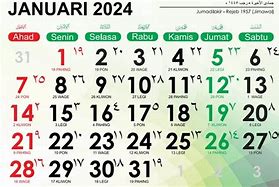
Key Features of Pure ALOHA
For more details please refer Derive the efficiency of Pure ALOHA protocol and Differences between Pure and Slotted Aloha article.
Pure ALOHA is an early and simple method for sending data over a shared network, where devices transmit whenever they have data to send. It doesn’t check if the channel is free, leading to frequent collisions when two devices send data at the same time. This results in a maximum efficiency of about 18.4%, meaning many transmissions are lost due to these collisions.
Frequently Asked Questions on Pure ALOHA – FAQs
Throughput of Pure ALOHA
Let 𝑇 be the frame time, i.e. the time required for 1 frame to be transmitted.
Let G be the number of transmission attempts per frame time.
The probability that 𝑘 frames are generated during the frame time is given by the Poisson distribution−
$$P(k)=\frac{G^k e^{-G}}{k!}$$
From this we can say that the probability that 0 frames are generated ( 𝑘k = 0 ) during the frame time is $e^{-G}$.
In case of pure ALOHA, the vulnerable time period so that collision does not occur between two frames is equal to two frame times, i.e. 2T𝑇. In 2T time,average number of transmission attempts is 2G.
The probability that 0 frames are initiated in the vulnerable time period will be −
The throughput, 𝑆, is calculated as the number of transmission attempts per frame time, 𝐺, multiplied by the probability of success, 𝑃(0).
What is the use of ALOHA?
ALOHA is used to transmit data over a public network channel.
Maximum Throughput of Pure ALOHA
The maximum throughput occurs when G𝐺=0.5.
The maximum throughput is thus−
$S_{max}$𝑎𝑥 = $0.5𝑒e^{-2*0.5}$ = $\frac{1}{2e}= 0.184$
Thus, it can be seen that the maximum throughput is only 18.4% in pure ALOHA.
Get certified by completing the course
The ALOHA protocol was first developed at the University of Hawaii in the early 1970s for packet radio networks. However, it can be used in any situation where multiple devices share a common communication channel. This protocol allows devices to transmit data at any time, without a set schedule. This is known as a random access technique, and it is asynchronous because there is no coordination between devices. When multiple devices attempt to transmit data at the same time, it can result in a collision, where the data becomes garbled. In this case, each device will simply wait a random amount of time before attempting to transmit again. The basic concept of the ALOHA protocol can be applied to any system where uncoordinated users are competing for the use of a shared channel.
ALOHA is an early computer networking method created at the University of Hawaii in the early 1970s. It’s a straightforward way to send data over a shared medium, like a wireless or wired network. The main idea of ALOHA is how it handles collisions, which happen when two devices try to send data at the same time, causing interference.
There are two main versions of the ALOHA protocol:
In this article we going to discuss pure ALOHA in detail.
Vulnerable period for packet A
Pure aloha v/s slotted aloha
Now, let's see the comparison chart between pure aloha and slotted aloha. We are comparing both terms on the basis of characteristics to make the topic more clear and understandable.
From the above discussion, it can be said that slotted aloha is somewhat better than pure aloha. It is because there is less possibility of collision in slotted aloha.
So, that's all about the article. Hope it will be helpful and informative to you.
Plot the characteristic curve of throughput versus offered traffic for a Pure and Slotted ALOHA system
NOTE: NetSim Academic supports a maximum of 100 nodes and hence this experiment can only be done partially with NetSim Academic. NetSim Standard/Pro would be required to simulate all the configurations.
ALOHA provides a wireless data network. It is a multiple access protocol (this protocol is for allocating a multiple access channel). There are two main versions of ALOHA: pure and slotted. They differ with respect to whether or not time is divided up into discrete slots into which all frames must fit.
In Pure Aloha, users transmit whenever they have data to be sent. There will be collisions and the colliding frames will then be retransmitted. In NetSim's Aloha library, the sender waits a random amount of time per the exponential back-off algorithm and sends it again. The frame is discarded when the number of collisions a packet experiences crosses the the "Retry Limit" - a user settable parameter in the GUI.
Let ''frame time'' denotes the amount of time needed to transmit the standard, fixed-length frame. In this experiment point, we assume that the new frames generated by the stations are modeled by a Poisson distribution with a mean of N frames per frame time. If N > 1, the nodes are generating frames at a higher rate than the channel can handle, and nearly every frame will suffer a collision. For reasonable throughput, we would expect 0 \< N \< 1. In addition to the new frames, the stations also generate retransmissions of frames that previously suffered collisions.
The probability of no other traffic being initiated during the entire vulnerable period is given by$\ e^{- 2G}\ $which leads to $S = \ G \times e^{- 2G}$ where, S is the throughput and G is the offered load. The units of$\ S$ and $G$ is frames per frame time.
G is the mean of the Poisson distribution followed by the transmission attempts per frame time, old and new combined. Old frames mean those frames that have previously suffered collisions.
The maximum throughput occurs at $G = 0.5$, with $S = \frac{1}{2e}$, which is about 0.184. In other words, the best we can hope for is a channel utilization of 18%. This result is not very encouraging, but with everyone transmitting at will, we could hardly have expected a 100% success rate.
In slotted Aloha, time is divided up into discrete intervals, each interval corresponding to one frame. In Slotted Aloha, a node is required to wait for the beginning of the next slot in order to send the next packet. The probability of no other traffic being initiated during the entire vulnerable period is given by $e^{- G}$ which leads to $S = G \times e^{- G}$. It is easy to compute that Slotted Aloha peaks at G = 1, with a throughput of $s = \frac{1}{e}$ or about 0.368.
What is the full form of ALOHA?
The full form of ALOHA is Advocates of Linux Open-source Hawaii Association.
Offered load and throughput calculations
Using NetSim, the attempts per packet time (G) can be calculated as follows.
$$\ \ G = \ \ \frac{Number\ of\ packets\ transmitted \times PacketTime(s)\ }{SimulationTime\ (s)}$$
where, G is Attempts per packet time. We derive the above formula keeping in mind that (i) NetSim's output metric, the number of packets transmitted, is nothing but the number of attempts, and (ii) since packets transmitted is computed over the entire simulation time, the number of "packet times" would be $\frac{SimulationTime(s)}{PacketTransmissionTime(s)}$ , which is in the denominator. Note that in NetSim the output metric Packets transmitted is counted at link (PHY layer) level. Hence MAC layer re-tries are factored into this metric.
The throughput (in Mbps) per packet time can be obtained as follows.
$$\ \ S = \ \ \ \ \frac{Number\ of\ packets\ successful \times PacketTime(s)}{SimulationTime\ (s)}$$
where, S = Throughput per packet time. In case of slotted aloha packet (transmission) time is equal to slot length (time). The packet transmission time is the PHY layer packet size in bits divided by the PHY rate in bits/s. Considering the PHY layer packet size as 1500B, and the PHY rate as 10 Mbps, the packet transmission time (or packet time) would be $\frac{1500 \times 8}{10 \times 10^{6}} = 1200\ \mu s$.
In the following experiment, we have taken packet size as 1460 B (Data Size) plus 28 B (Overheads) which equals 1488 B. The PHY data rate is 10 Mbps and hence packet time is equal to 1.2 milliseconds.
Open NetSim and click on Experiments> Legacy Networks> Throughput versus load for Pure and Slotted Aloha> Pure Aloha then click on the tile in the middle panel to load the example as shown in below Figure 15‑1.
Figure 15‑1: List of scenarios for the example of Throughput versus load for Pure and Slotted Aloha
NetSim UI displays the configuration file corresponding to this experiment as shown below Figure 15‑2.
Figure 15‑2: Network set up for studying the Pure aloha
Pure Aloha: Input for 10-Nodes sample
Step 1: Drop 10 nodes (i.e. 9 Nodes are generating traffic.)
Node 2, 3, 4, 5, 6, 7, 8, 9, and 10 generates traffic. The properties of Nodes 2, 3, 4, 5, 6, 7, 8, 9, and 10 which transmits data to Node 1 are given in the below table.
Step 2: Wireless Node Properties
Wireless Node Properties
Interface1_Wireless (PHYSICAL_LAYER)
Data Rate (Mbps) 10
Interface1_Wireless (DATALINK_LAYER)
Retry_Limit 0
MAC_Buffer FALSE
Slot Length(µs) 1200
Table 15‑1: Wireless Node Properties
(Note: Slot Length(µs) parameter present only in Slotted Aloha Wireless Node Properties Interface_1 (Wireless))
Step 3: In Adhoc Link Properties, channel characteristics is set as No Path Loss.
Step 4: Application Properties
Application_1 Properties
Application Method Unicast
Application Type Custom
Source_Id 2
Destination_Id 1
Transport Protocol UDP
Packet Size Distribution Constant
Inter Arrival Time Distribution Exponential
Table 15‑2: For Application_1 Properties
Step 5: Plots are enabled in NetSim GUI.
Step 6: Simulation Time- 10 Seconds
Note: Obtain the values of Total Number of Packets Transmitted and Collided from the results window of NetSim.
Input for 20-Nodes sample
Step 1: Drop 20 nodes (i.e., 19 Nodes are generating traffic.)
Nodes 2, 3, 4, 5, 6, 7, 8, 9, 10, 11, 12, 13, 14, 15, 16, 17, 18, 19, and 20 transmit data to Node 1.
Continue the experiment by increasing the number of nodes generating traffic as 29, 39, 49, 59, 69, 79, 89, 99, 109, 119, 129, 139, 149, 159, 169, 179, 189 and 199 nodes.
Slotted ALOHA: Input for 10-Nodes sample
Step 1: Drop 20 nodes (i.e., 19 Nodes are generating traffic.)
Nodes 2, 3, 4, 5, 6, 7, 8, 9, 10, 11, 12, 13, 14, 15, 16, 17, 18, 19, and 20 transmit data to Node 1 and set properties for nodes and application as mentioned above.
Continue the experiment by increasing the number of nodes generating traffic as 39, 59, 79, 99, 119, 139, 159, 179, 199, 219, 239, 259, 279, 299, 319, 339, 359, 379, and 399 nodes.
Comparison Table: The values of Total Number of Packets Transmitted and Collided obtained from the network statistics after running NetSim simulation are provided in the table below along with Throughput per packet time& Number of Packets Transmitted per packet time.
+--------+----------+-------+---------+---------+----------+---------+ | Number | Total | Total | Suc | A | Th | Thr | | of | number | n | cessful | ttempts | roughput | oughput | | nodes | of | umber | Packets | per | per | per | | gene | Packets | of | ( | packet | packet | packet | | rating | Tra | Pa | Packets | time(G) | time(S) | time. | | t | nsmitted | ckets | Trans | | | Theo | | raffic | | Col | mitted- | | | retical | | | | lided | Packets | | | | | | | | Co | | | (S | | | | | llided) | | | =$\math | | | | | | | | bf{\ }\ | | | | | | | | mathbf{ | | | | | | | | G}\math | | | | | | | | bf{*}\m | | | | | | | | athbf{e | | | | | | | | }^{\mat | | | | | | | | hbf{- 2 | | | | | | | | }\mathb | | | | | | | | f{G}}$) | +========+==========+=======+=========+=========+==========+=========+ | 9 | 494 | 60 | 434 | 0.05928 | 0.05208 | 0.05265 | +--------+----------+-------+---------+---------+----------+---------+ | 19 | 978 | 187 | 791 | 0.11736 | 0.09492 | 0.09281 | +--------+----------+-------+---------+---------+----------+---------+ | 29 | 1482 | 415 | 1067 | 0.17784 | 0.12804 | 0.12461 | +--------+----------+-------+---------+---------+----------+---------+ | 39 | 1991 | 700 | 1291 | 0.23892 | 0.15492 | 0.14816 | +--------+----------+-------+---------+---------+----------+---------+ | 49 | 2443 | 1056 | 1387 | 0.29316 | 0.16644 | 0.16311 | +--------+----------+-------+---------+---------+----------+---------+ | 59 | 2907 | 1429 | 1478 | 0.34884 | 0.17736 | 0.17363 | +--------+----------+-------+---------+---------+----------+---------+ | 69 | 3434 | 1874 | 1560 | 0.4122 | 0.19212 | 0.18075 | +--------+----------+-------+---------+---------+----------+---------+ | 79 | 3964 | 2377 | 1587 | 0.47568 | 0.19044 | 0.18371 | +--------+----------+-------+---------+---------+----------+---------+ | 89 | 4468 | 2909 | 1559 | 0.53616 | 0.18792 | 0.18348 | +--------+----------+-------+---------+---------+----------+---------+ | 99 | 4998 | 3468 | 1530 | 0.59976 | 0.1836 | 0.18073 | +--------+----------+-------+---------+---------+----------+---------+ | 109 | 5538 | 4073 | 1465 | 0.66456 | 0.1758 | 0.17592 | +--------+----------+-------+---------+---------+----------+---------+ | 119 | 6023 | 4574 | 1449 | 0.72276 | 0.17388 | 0.1703 | +--------+----------+-------+---------+---------+----------+---------+ | 129 | 6503 | 5102 | 1401 | 0.78036 | 0.16812 | 0.16386 | +--------+----------+-------+---------+---------+----------+---------+ | 139 | 6992 | 5650 | 1342 | 0.83904 | 0.16104 | 0.15668 | +--------+----------+-------+---------+---------+----------+---------+ | 149 | 7481 | 6208 | 1273 | 0.89772 | 0.15276 | 0.14907 | +--------+----------+-------+---------+---------+----------+---------+ | 159 | 7998 | 6787 | 1211 | 0.95976 | 0.14532 | 0.14078 | +--------+----------+-------+---------+---------+----------+---------+ | 169 | 8507 | 7341 | 1166 | 1.02084 | 0.13992 | 0.13252 | +--------+----------+-------+---------+---------+----------+---------+ | 179 | 9008 | 7924 | 1084 | 1.08096 | 0.13008 | 0.12442 | +--------+----------+-------+---------+---------+----------+---------+ | 189 | 9486 | 8483 | 1003 | 1.13832 | 0.12036 | 0.11682 | +--------+----------+-------+---------+---------+----------+---------+ | 199 | 10025 | 9093 | 932 | 1.203 | 0.11184 | 0.10848 | +--------+----------+-------+---------+---------+----------+---------+
Table 15‑3: Total No. of Packets Transmitted, Collided, Attempts per packet time and throughput per packet time for Pure Aloha.
Table 15‑4: Total No. of Packets Transmitted, Collided, Throughput per packet time and throughput per packet time for Slotted Aloha
Thus, the following characteristic plot for the Pure ALOHA and Slotted ALOHA is obtained, which matches the theoretical result.
Figure 15‑3: Throughput vs offered load for pure Aloha
Figure 15‑4: Throughput vs. Offered load for Slotted Aloha
Maximum Throughput of Pure ALOHA
The maximum throughput occurs when G=0.5
Smax=0.5 × e-1 ≈ 0.184
This means the maximum throughput of Pure ALOHA is approximately 18.4%. In other words, only about 18.4% of the time is used for successful transmissions, and the rest is lost due to collisions.
What is ALOHA and its type?
ALOHA is a basic method for sending data over a shared network. It was created to manage how data is transmitted and to deal with collisions when two devices send data at the same time.
There are two types of ALOHA:























